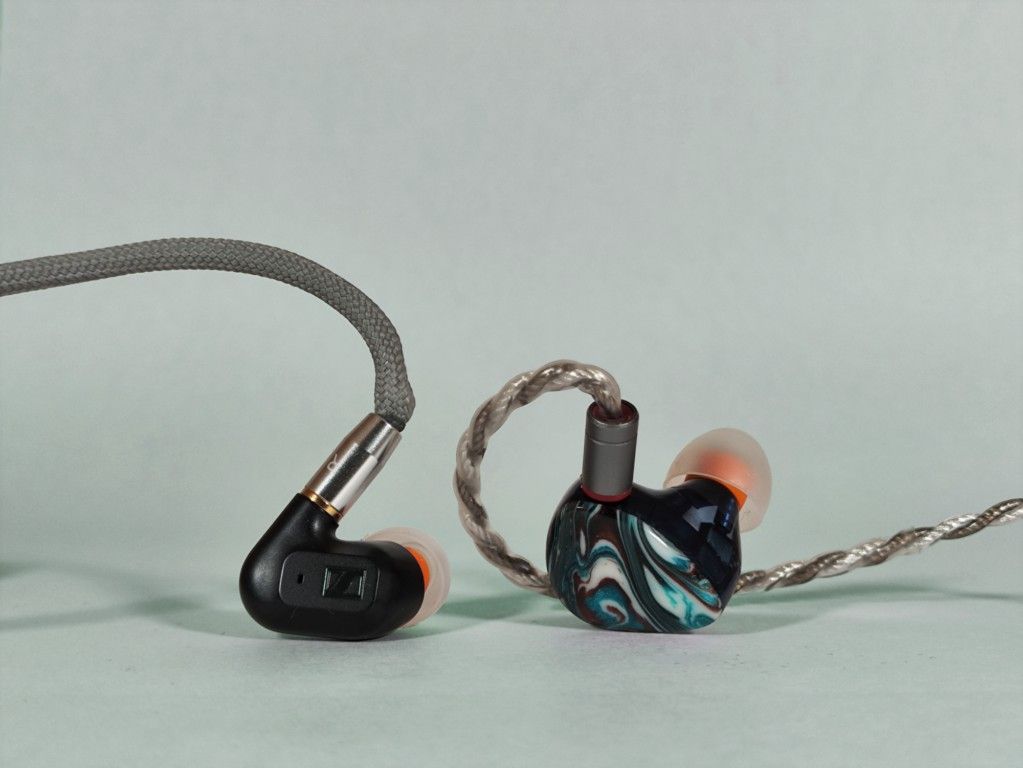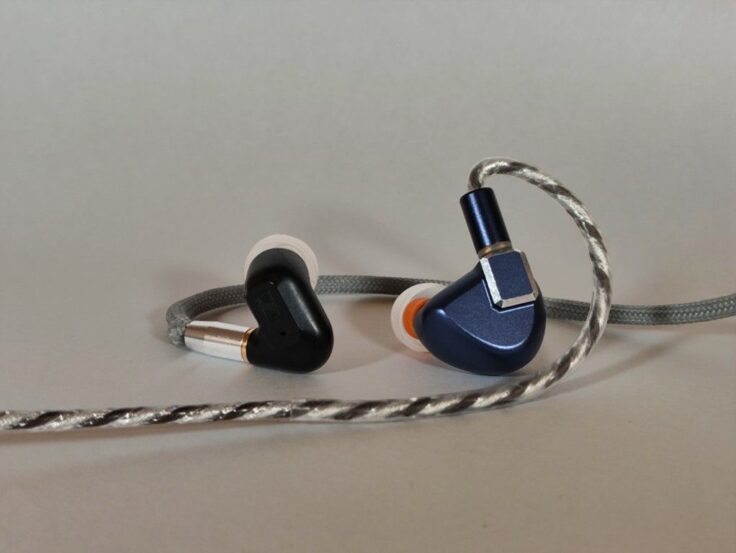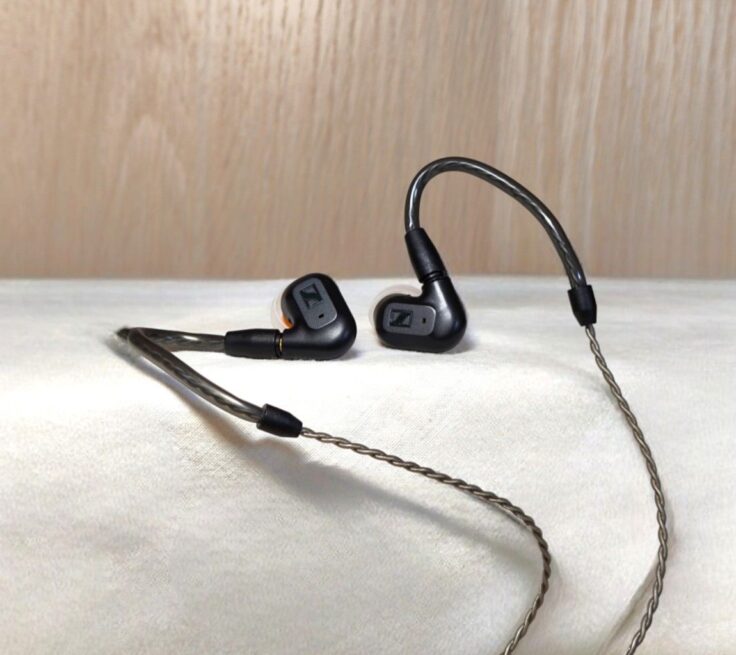The Sennheiser IE200 is among the smallest in-ear monitors available. It houses a single dynamic driver. Despite its compact size and plastic housing, the sound is powerful and detailed. The tuning is lush and inviting. Priced very competitively, currently at 99 USD on sale, the IE200 is Sennheiser’s offering to the masses.
The similarly priced 109 USD Letshuoer x Gizaudio Galileo is a dual-driver earphone with a neutral sound signature, and it’s wonderfully natural and detailed sounding, giving the IE200 pretty fierce competition.
Even if it’s Sennheiser’s least expensive option, the IE200 employs the same 7mm True Response driver as found in its higher-tier models. The supplied cable is thin and easily tangled, and the MMCX connectors have an unnecessary proprietary flange which you need to cut off to use this party cable.
The Letshuoer x Gizaudio Galileo has a meticulously designed resin housing with innovative resonance handling. It features a clean, well-balanced sound with impressive detail, featuring a 10mm dynamic driver with a silicon aluminium-magnesium coated diaphragm, and a Danish Sonion 2389 balanced armature driver. It also includes high-quality silver-plated OFC wire with optional termination and 0.78mm earphone connectors suitable for third-party cables.
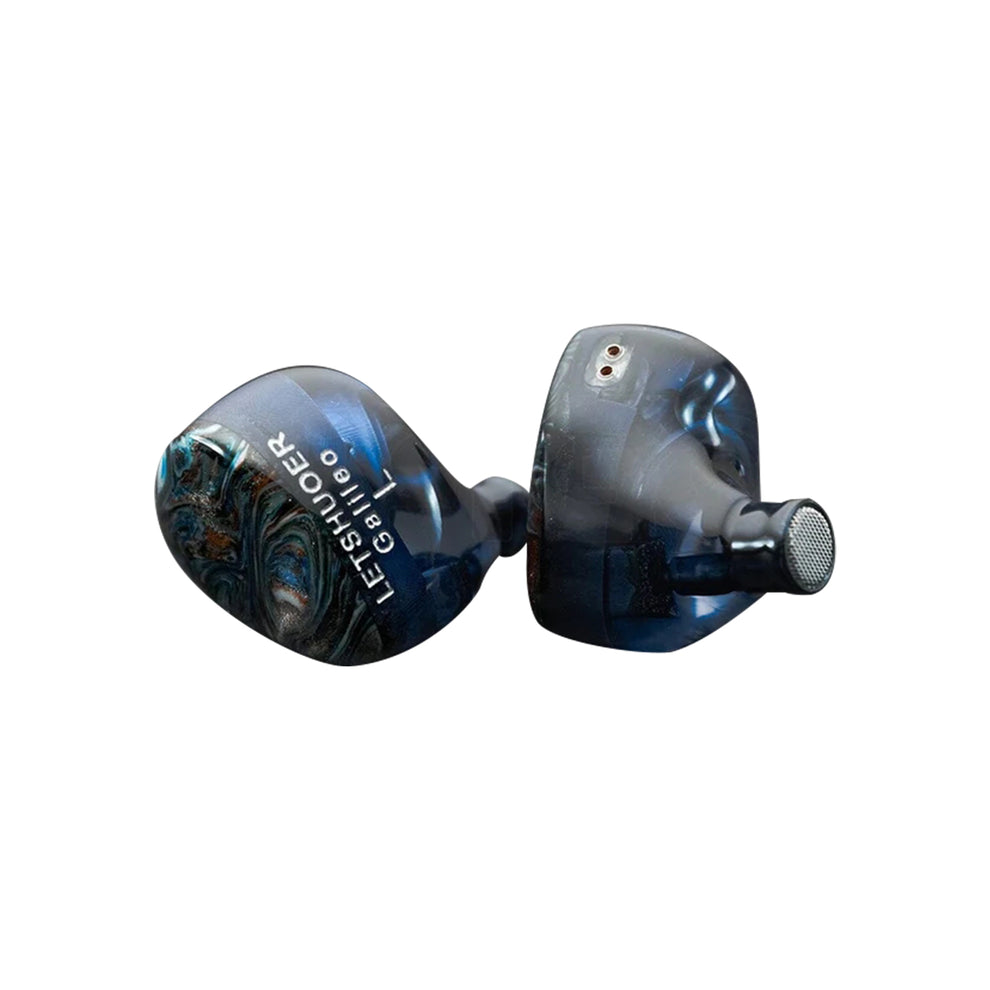
LETSHUOER x GIZAUDIO GALILEO SPECIFICATIONS
- Drivers: 1 Dynamic Driver, 1 Balanced Armature Driver
- Impedance: 14Ω
- Sensitivity: 104dB
- Frequency Response: 20Hz – 20KHz
- Cable Length: 1.2M
- Pin Type: 2-pin Connector (0.78MM)
- Plug Type: 3.5mm
- Tips included
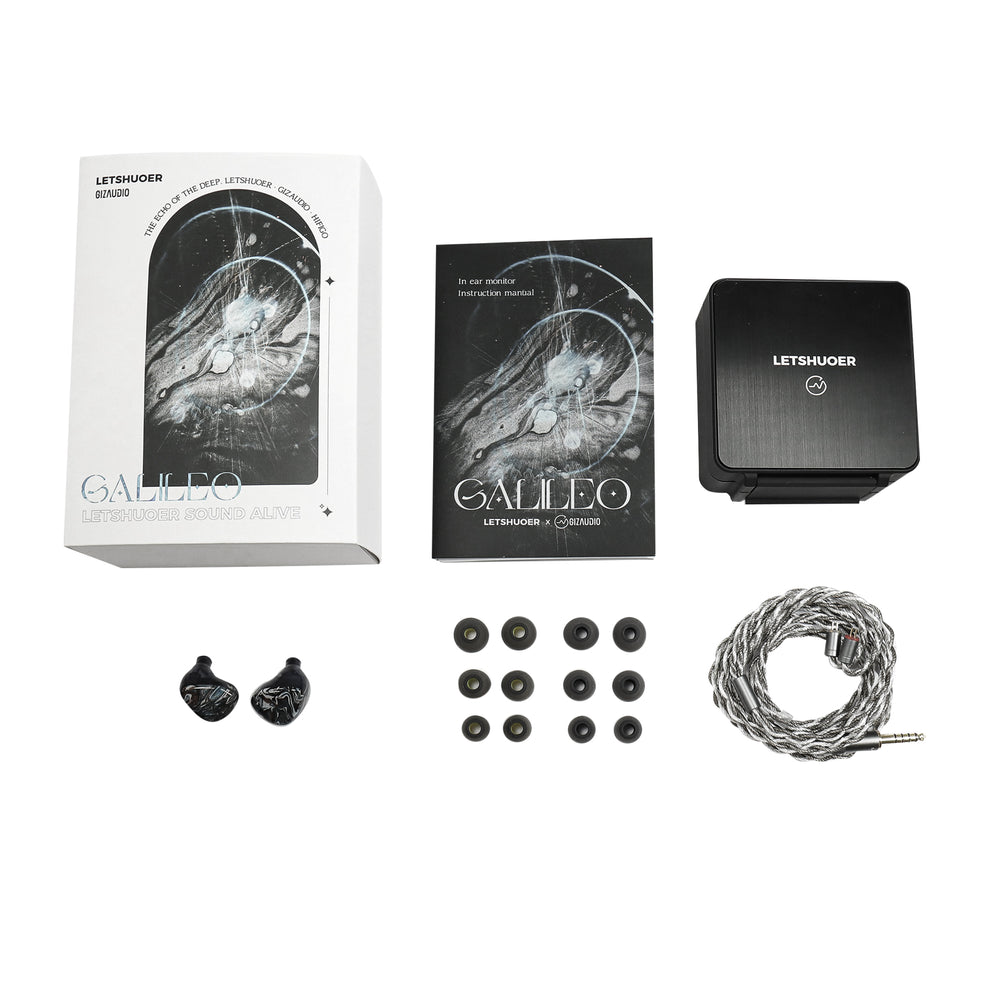
Price when reviewed: 109 USD.
- Price on Amazon: Letshuoer x Gizaudio Galileo
- Price on Linsoul: Letshuoer x Gizaudio Galileo
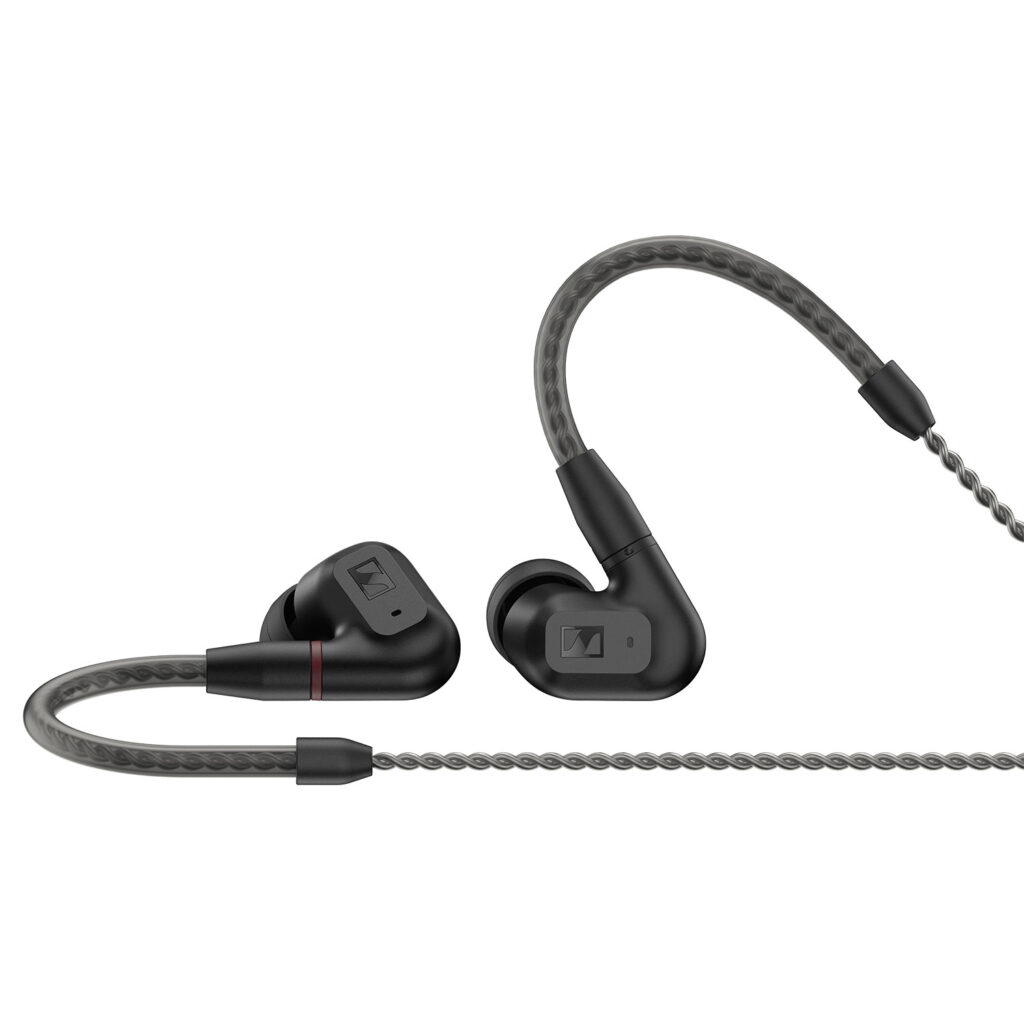
SENNHEISER IE200 SPECIFICATIONS
- Single dynamic 7mm extra-wideband True Response transducer, the same as in the IE 300, IE 600 and IE 900.
- Frequency range: 6 – 26,000 Hz.
- Impedance: 18 Ohm.
- Sound pressure level: 119 dB.
- 1.2 m braided cable with MMCX connectors (semi proprietary) and an angled 3.5mm jack
- Adjustable ear hooks and choice of ear tip adapters.
Price when reviewed: 99 USD on sale, MSRP 149 USD
Price on Amazon: Sennheiser IE200
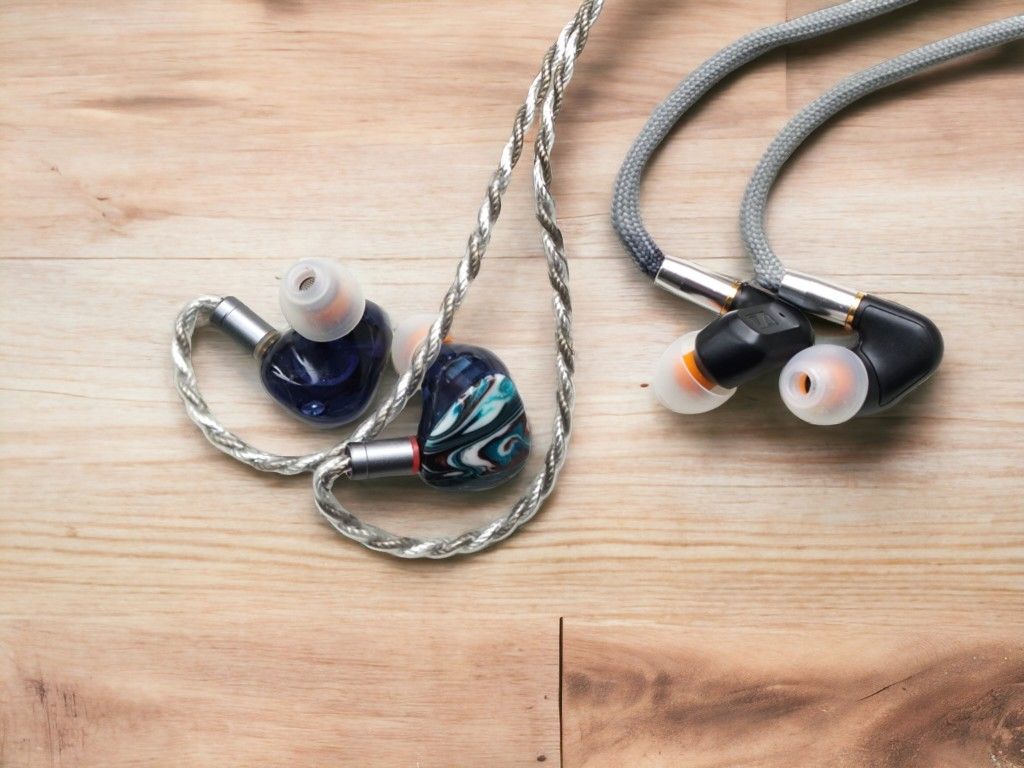
COMPARISONS
Amplifier and source: Topping A90 amp and the RME ADI-2 DAC FS.
Two by Arild Andersen Group
It sounds very organic and alive with the Galileo. The bass, the percussion, the piano, and the saxophone all play together in a very nice way. The midrange shines. The sound stage and imaging are good, but not supernaturally so. It just sounds very natural.
With the IE200, the mids are drawn a bit back, and the sound is darker and lusher. It doesn’t feel as natural and alive as the Galileo.
Khmer by Nils Petter Molvær
The bass is huge on the IE200; it’s a challenge to handle this track well, and it is a bit too boomy. Everything else is smooth and lush, with plenty of detail.
The Galileo has a tighter, better-controlled bass. There’s more energy in the upper mids, which brings the trumpet further forward. I think the imaging and separation are also better with the Galileo.
Night Train to You by Marcin Wasilewski Trio
Again, a very nice performance from the Galileo. Every instrument has a very natural timbre. Detail retrieval is excellent across the frequency spectrum, and everything is nicely balanced.
Changing to the IE200, the bass becomes a lot more dominant. The midrange gets lusher, with less presence in the upper mids. The detail level feels slightly lower than with the Galileo.
The Other Side by Tord Gustavsen
Once more, the Galileo impresses with its tonality and timbre. Further, its ability to separate instruments, while at the same time giving them fullness and body is impressive. The highly resolving nature treble becomes very apparent with the percussion in this piece.
The IE200 is not as impressive in the treble department, it’s less detailed. Generally, I find the IE200 to sound a bit too dark and lush here, with a little boomy bass in direct comparison to the Galileo.
Jambi by Tool
The IE200 sounds better here. The fuller bass and darker mids give a massiveness to the presentation. However, the treble is slightly sibilant with the vocals.
The Galileo doesn’t have the bass boost to make this track as massive as it can be, but the vocals really stand out. This track really sounds its best with a little bass boost, however, the Galileo is very balanced and full of texture and detail and the treble is not sibilant with the vocals – as some others can be.
Smile by Pearl Jam
This sounds crisp and clear with the Galileo. There is great separation, and the midrange is very upfront, giving the vocals the attention they deserve. The bass is good, and the treble is detailed and articulate without sibilance.
The IE200 delivers more bass quantity, which does suit the song well. Also, it has mellower mids. The highs are a bit sharper, and Eddie Vedder’s vocals get a bit sibilant sometimes.
Details are higher with the Galileo, the treble has better resolution. Dynamics are basically on the same level, and the soundstage has the same size, but imaging is better with the Galileo.
Escape Route by Boris Blank
A wonderful presentation from Galileo. The bass is not thunderous but definitely plentiful. The trumpet is clear and cuts through the mix. Detail, layering, and imaging are excellent.
Never Enough by Loren Allred
It is a beautiful song, but I don’t know what they do to the recordings in the production process to make it sound mediocre. It sounds like they’ve put it through a machine to add a dose of digital glare. Anyway, the Galileo is quite revealing and has plenty of detail, and I find it well balanced but revealing. The upper midrange is annoying, but not because the Galileo does anything wrong. This recording just reveals how revealing Galileo is.
With this track, the Sennheiser sounds better. It has a recessed upper midrange, and this camouflages the flaws in the production. The lush and smooth character does indeed make this track more enjoyable.
As Before by Olga Konkova
The cajôn drum kicks hard, the vocals are delicious, and no digital glare is present, just a pure human voice. It sounds very natural. I am especially impressed with the sense of depth. You can hear the reverb from the instruments and vocals, this is not obvious with all IEMs, far from it.
The IE200 has an even more present bass, but it does not have better definition or texture. The vocals sound smoother and lusher, with less energy in the upper midrange. The detail level seems a bit lower than with the Galileo, and the imaging and layering are not quite on par.
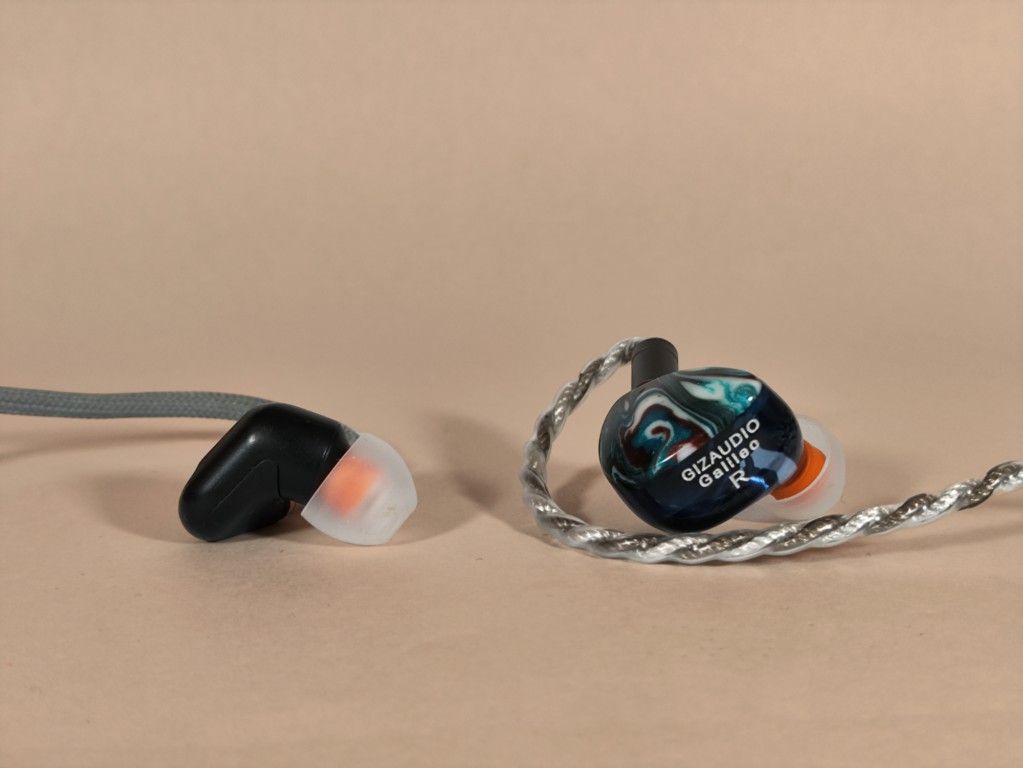
AMPLIFICATION
I have done my listening comparisons with the topping A90 amplifier, which of course has more than enough power to drive any normal in-ear monitor, not only to the correct volume but also with the authority and enough control to give them the best.
With my POCO F5 phone’s headphone output, the Galileo sounds quite respectable with power to spare. The Dragonfly Red works well, as does the THX Onyx USB dongle.
The IE200 needs me to max out the volume on my phone, and seems to be harder to drive. It sounds quite okay with the dongles, but there is a bigger difference between them and my desktop setup than with the Galileo.
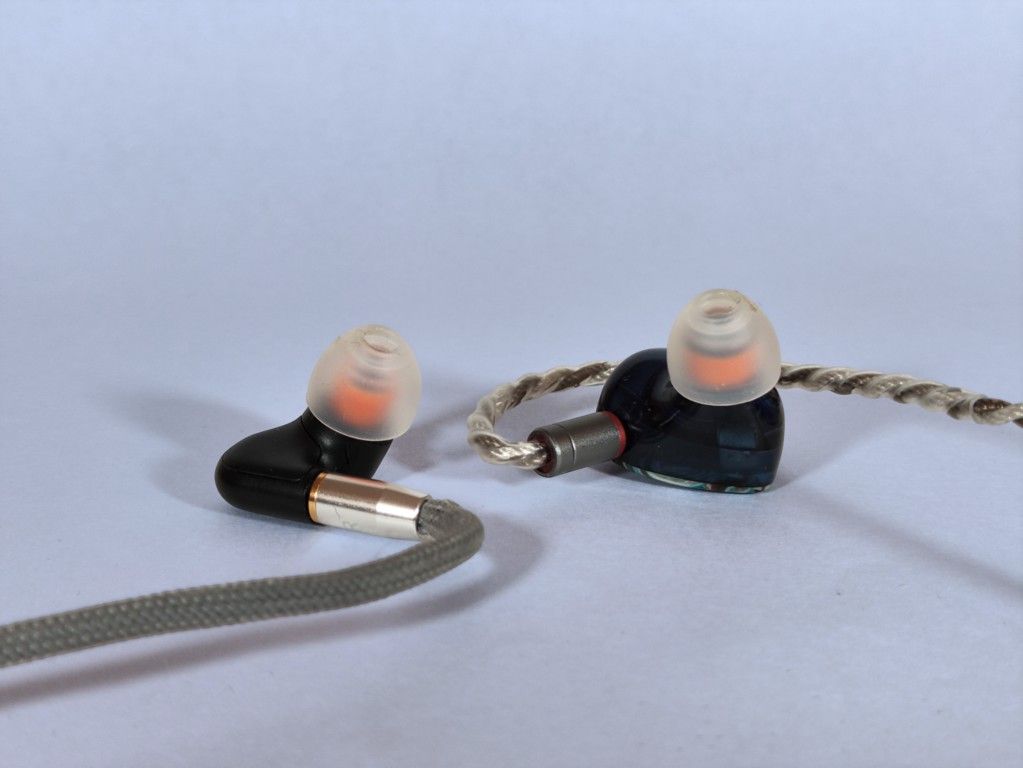
WRAPPING IT UP
Sound Signature
They have a similar amount of treble energy. The midrange is, however, very different, with the Sennheiser being more mellow while the Galileo has more energy in the upper mids, giving it a more neutral tonality. The IE200 also has significantly more bass, which combined with the midrange differences makes the IE200 sound darker, lusher, and warmer.
Treble
Even though the Sennheiser IE200 has a very good treble for the price, I do find that the treble of the Galileo’s treble superior. It’s wonderfully detailed.
They both have a good amount of presence, but unlike the IE200, the Galileo is more even and doesn’t have the peaks that make it prone to sibilance.
I find that the treble of the Galileo is more precise and also more balanced and natural sounding.
Midrange
The tuning of the mid-range is different. The IE200 has a darker and more mellow-sounding midrange; the Galileo is brighter with a more pronounced upper midrange.
This definitely affects how most instruments and vocals are presented, and it will vary from track to track as to which sound subjectively the best.
However, I do find that the Galileo has the mid-range that sounds the most natural and neutral. It is well articulated and clear, not recessed in any way, and really brings out the instruments and vocals in a way the darker and lusher IE200 cannot. There are, however, tracks where the Sennheiser definitely sounds better, but it is undoubtedly more colored.
Bass
The IE200 offers more bass quantity than the Galileo. It is fuller and meatier, giving some tracks a welcome helping hand in the lower regions. However, the Galileo is not bass-light, I find it to be very neutral and thus natural sounding. It has great definition and certainly has great texture and definition.
Soundstage and Imaging
With the IE200, the sound stage is reasonably wide and open, with a good sense of depth. The Galileo is slightly more open-sounding. Imaging, layering, and sense of depth are quite good with the IE200, but better with the Galileo.
Detail, Dynamics and Timbre
I perceive the Galileo as having a huge amount of detail across the board. I am especially impressed by the treble. The IE200 is not quite on the same level, at least not on my setup and in my ears (literally). Don’t get me wrong, the IE200 is good, but the Galileo is stellar at rendering detail and the definition great.
Microdynamics, the articulation of details, is better with the Galileo, especially in the midrange and bass.
In terms of macrodynamics, the IE200, because it has an elevated bass and treble, at first listen, comes off as more dynamic in those ranges, but after a while, I cannot say that the impression remains.
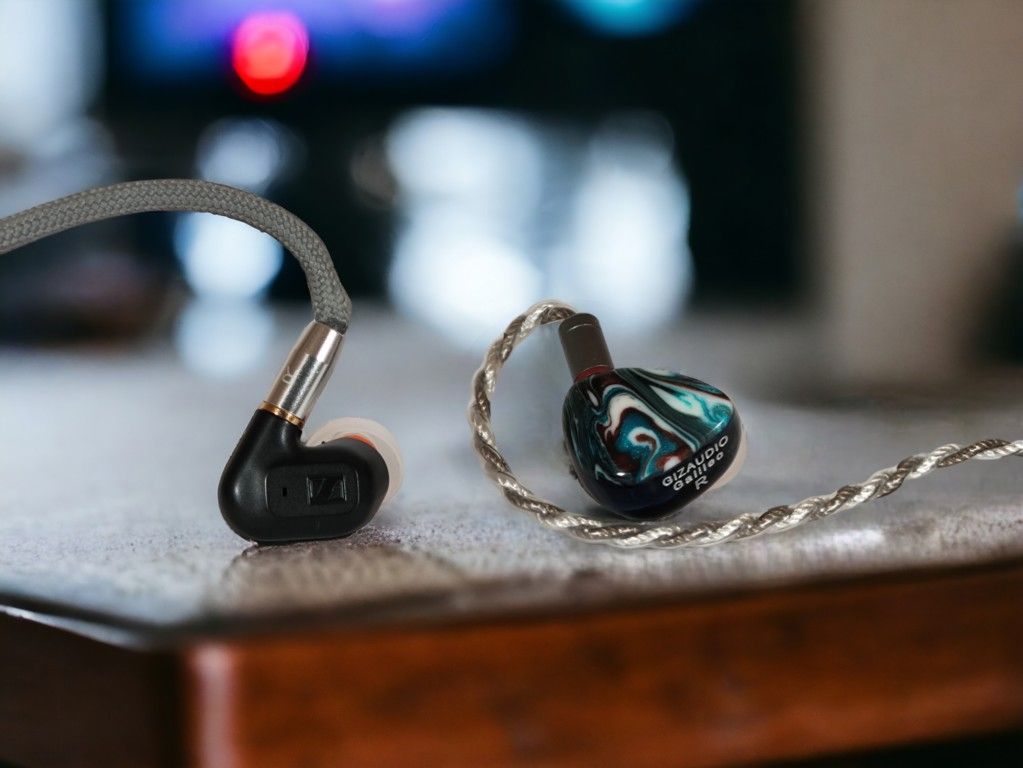
CONCLUSION
In summary, the Letshuoer Galileo and the Sennheiser IE200 offer different sound signatures, with different strengths.
The Galileo delivers a neutral tonality and natural timbre, and presents a shockingly well-balanced and nuanced sound. On the other hand, the Sennheiser IE200 delivers darker mids and a heavier bass yet retains a crisp and clear treble. It sounds lusher and warmer, but loses a bit of the fine detail and nuance in direct comparison.
These are both among my favourite IEMs in the price range. Personally, I am most impressed with the Galileo, which delivers a more neutral and natural tonality along with a more technically able sound reproduction.
- Buy on Amazon: Letshuoer x Gizaudio Galileo
- Buy on Linsoul: Letshuoer x Gizaudio Galileo
- Buy on Amazon: Sennheiser IE200
We make earnings through affiliate links and any purchase you make on Amazon or Linsoul clicking one of our links will give us a small provision at no cost to you.
We only get a provision for items that are not returned, so there’s no incentive for us to recommend something that’s not good.
Linsoul : Headphones, Earbuds, Wireless Earbuds, Desktop DAC/AMP, Portable DAC/AMP, Digital Audio Players,
Amazon: Headphones, IEMs, Headphone Amplifiers, Home Audio or Anything else.
.
If you enjoyed this article or other content on The Headphoneer, you might consider leaving a small donation to keep this website up and running. No donation is too small. Thanks for supporting us!
If you like our work please follow us on Instagram, Facebook and Twitter , it will help us grow. Sharing is caring 🙂


